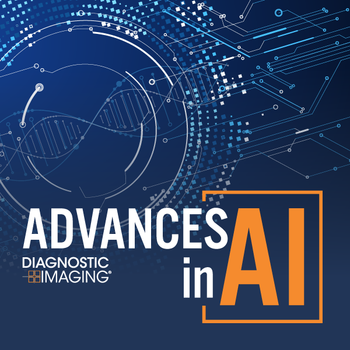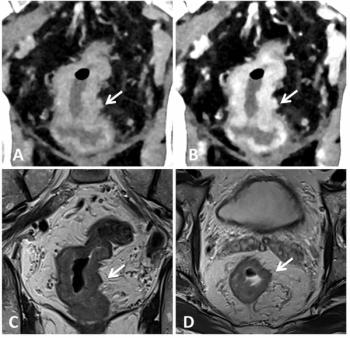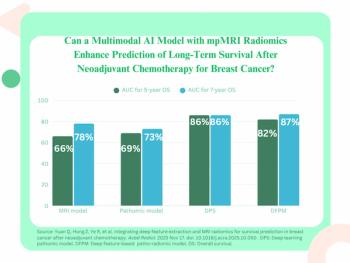
Report from ISMRM: Organizers emphasize clinical themes
Innovation has always been the name of the game for the annual meeting of the International Society for Magnetic Resonance in Medicine. The 17th annual meeting beginning Saturday in Honolulu again showcases MRI science in action. But for this meeting, organizers added new features emphasizing MRI’s clinical applications and capitalizing on new communications technologies to encourage interactions between presenters and attendees at the show.
Innovation has always been the name of the game for the annual meeting of the International Society for Magnetic Resonance in Medicine. The 17th annual meeting beginning Saturday in Honolulu again showcases MRI science in action. But for this meeting, organizers added new features emphasizing MRI's clinical applications and capitalizing on new communications technologies to encourage interactions between presenters and attendees at the show.
Following ISMRM tradition, the program committee, headed by Dr. Margaret Hall-Craggs, is devoting day-long sessions on Saturday and Sunday to clinical refresher courses. Beginning with the annual Mansfield lecture on Monday, the conference shifts more toward the cutting-edge aspects of instrumentation and basic applications development. Yet the clinical flavor will persist through a clinical intensive course that is woven through the schedule through Wednesday.
Advances in Clinical Musculoskeletal, Breast, and Body MRI will be presented during Saturday and Sunday. The Saturday program also includes an option of a full day of body MRI training. Sunday's course will examine imaging of the lower extremities. In addition to the plenary and scientific sessions, attendees can opt for practical training in MRI of the musculoskeletal system, breast, body, and soft tissues and MR angiography from Monday to Wednesday.
"It is basically back-to-back teaching and then very clinically oriented scientific sessions," Hall-Craggs said in an interview. "It is almost a meeting within a meeting."
Organizers have also broken with tradition in their selection of presenters for the ISMRM lectures named for MRI inventors Paul Lauterbur, Ph.D., and Sir Peter Mansfield. The society typically selects an MRI pioneer to describe scientific discoveries that led to development of MRI as a viable medical imaging tool for one lecture. A scientist who is at the forefront of advancing the current technology usually presents the other.
This year, Hall-Craggs and ISMRM president Dr. Villian Lee chose two veteran researchers who are continuing to affect the direction of the field.
For the Mansfield lecture, Dr. Robert G. Shulman, Ph.D., of the Yale University School of Medicine will lecture on brain energy and brain work. Shulman has used MR spectroscopy to explore the nature of metabolic pathways in the brain.
Dr. A. Gregory Sorensen, an associate professor of radiology at Massachusetts General Hospital, will follow Shulman. He will describe how multiparametric MR guidance will be used to treat acute stroke. Metabolic pathways will also figure into the presentation by Rudiger J. Seitz, Ph.D., a professor of radiology at Heinrich-Heine University in Dusseldorf, Germany. He will describe MRI's evolving role in promoting stroke recovery.
For the Lauterbur lecture, the ISMRM selected Albert Macovski, Ph.D., whose long career has involved the early development of real-time ultrasound imaging, with subsequent contributions to the development of CT and MR angiography. Macovski will consider what he calls MRI's "charmed past and exciting future."
His presentation will precede a presentation by the University of California, Davis's Simon Cherry, Ph.D., on PET/MRI, an emerging technology Cherry helped create. Kullervo Hynynen, Ph.D., of Sunnybrook Health Sciences Center in Toronto will follow with an update of the growing influence of MR for guiding high-intensity focused ultrasound therapy.
Program organizers are making the conference more accessible to community radiologists by associating the basic scientific concepts underlying the plenary lectures with translational research and clinical applications, Hall-Craggs said.
"Our theme has been very much this flow of ideas from basic research to clinical applications," she said.
The Friday plenary session, for example, is entitled "Prostate cancer: what every man needs to know -- biology to therapy." Dr. Angelo De Marzo will begin the session by examining the molecular pathobiology of prostate cancer. John Kurhanewicz, Ph.D., of the University of California, San Francisco will then cover the current clinical imaging applications, including MR spectroscopy, for the disease. Dr. Jelle O. Barentsz will conclude by describing MRI's emerging role in guided therapy.
ISMRM meeting organizers have also adopted online social networking technologies to encourage communications between attendees and electronic and traditional scientific poster presenters. At past conferences, attendees missed an opportunity to interact with presenters if they couldn't appear at the posters at designated presentation times. Now attendees can use software directly from an electronic poster computer in the exhibit hall to join discussions for specific posters and to participate in blogging forums for traditional posters and oral presentations.
"You can blog everything during the meeting and three months afterward," Hall-Craggs said. "If you have questions about technique or an opinion about a paper or a poster, you can just blog the topic."
The society's new "Science in Action" program stresses communications between the ISMRM and the community where its annual meeting is held. Selected students from a mix of private and public high schools in Honolulu will spend a day at the meeting. They will be assigned expert mentors for a tour of the poster sessions and technical exhibit.
"They will see what scientists do and how they work," she said.
Newsletter
Stay at the forefront of radiology with the Diagnostic Imaging newsletter, delivering the latest news, clinical insights, and imaging advancements for today’s radiologists.




























